Australorp chickens, originating in Australia in the early 20th century, are known for their excellent egg-laying abilities and meat quality. Originating from Orpington breeds, they gained global popularity due to their productivity and gentle temperament, with varieties including Black, Blue, and White.
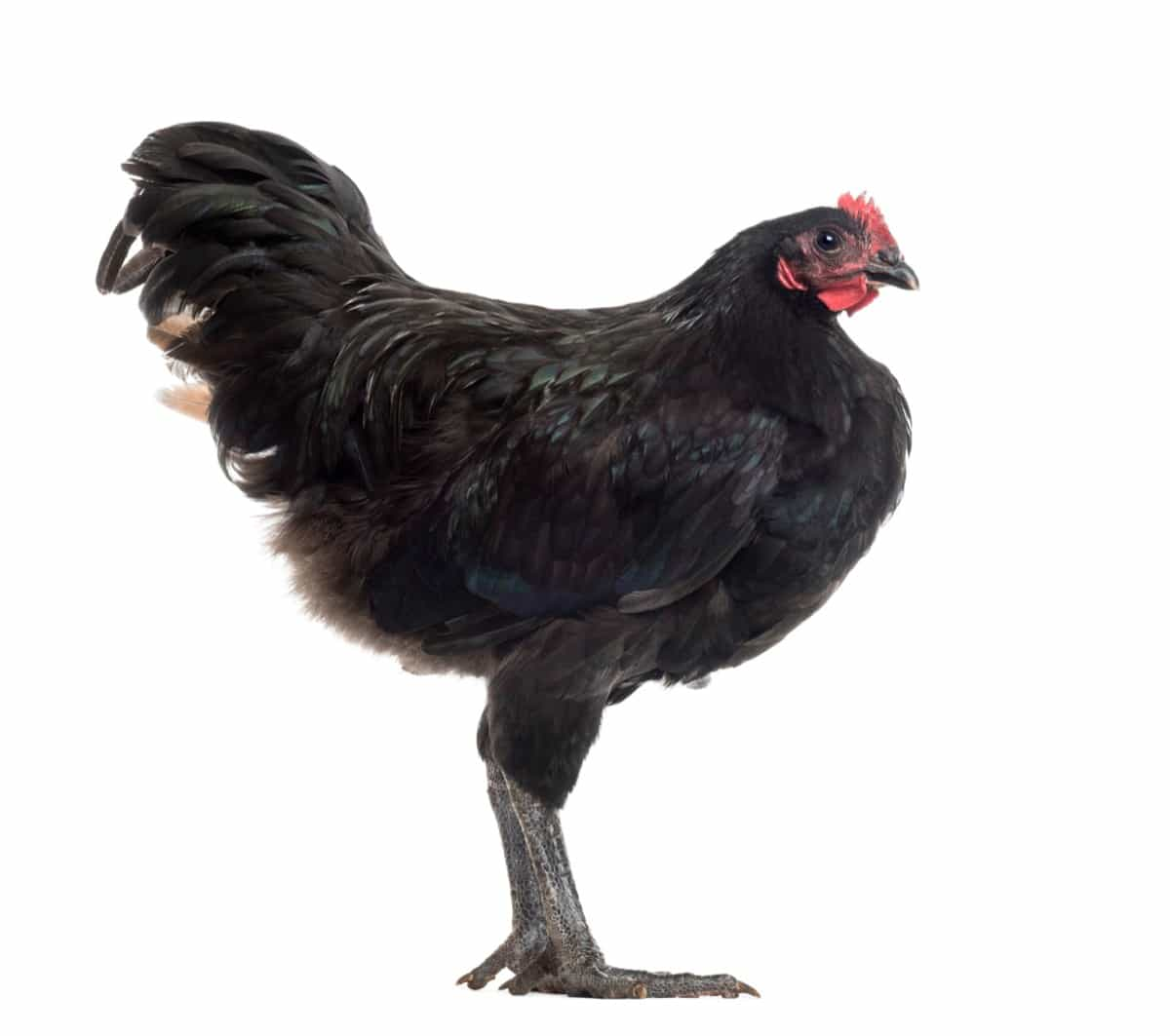
Raising Australorp Chickens
History and Origin
The Australorp is an Australian chicken breed renowned for its egg-laying abilities. Originating from the Australian black Orpington, it gained worldwide popularity in the 1920s. The breed, named after its origin, was developed with significant Australian involvement, making it the honorary national bird of Australia.
Breed Characteristics and Appearance
Australorps are known for their striking appearance, with glossy black feathers in the sunlight. They have a sturdy build, broad chests and well-rounded bodies. Standard-size Australorps weigh around 6.5-8.5 pounds (hens) and 8.5 pounds (roosters).
Recognition and Popularity
Australorps gained recognition for their exceptional egg-laying abilities, setting a world record by producing 364 eggs in 365 days. They quickly grew in popularity both in Australia and internationally.
Different Types of Australorps/ Australorp Chicken Varieties
There are various strains of Australorps, each with slight differences in appearance and temperament. Some common varieties include Black, Blue, and White Australorps.
Australorp Chicken Price
The cost of Australorp chickens can vary depending on factors such as age, quality, and lineage. On average, day-old chicks may range from $3 to $5, while mature breeding stock can cost anywhere from $10 to $40.
In case you missed it:
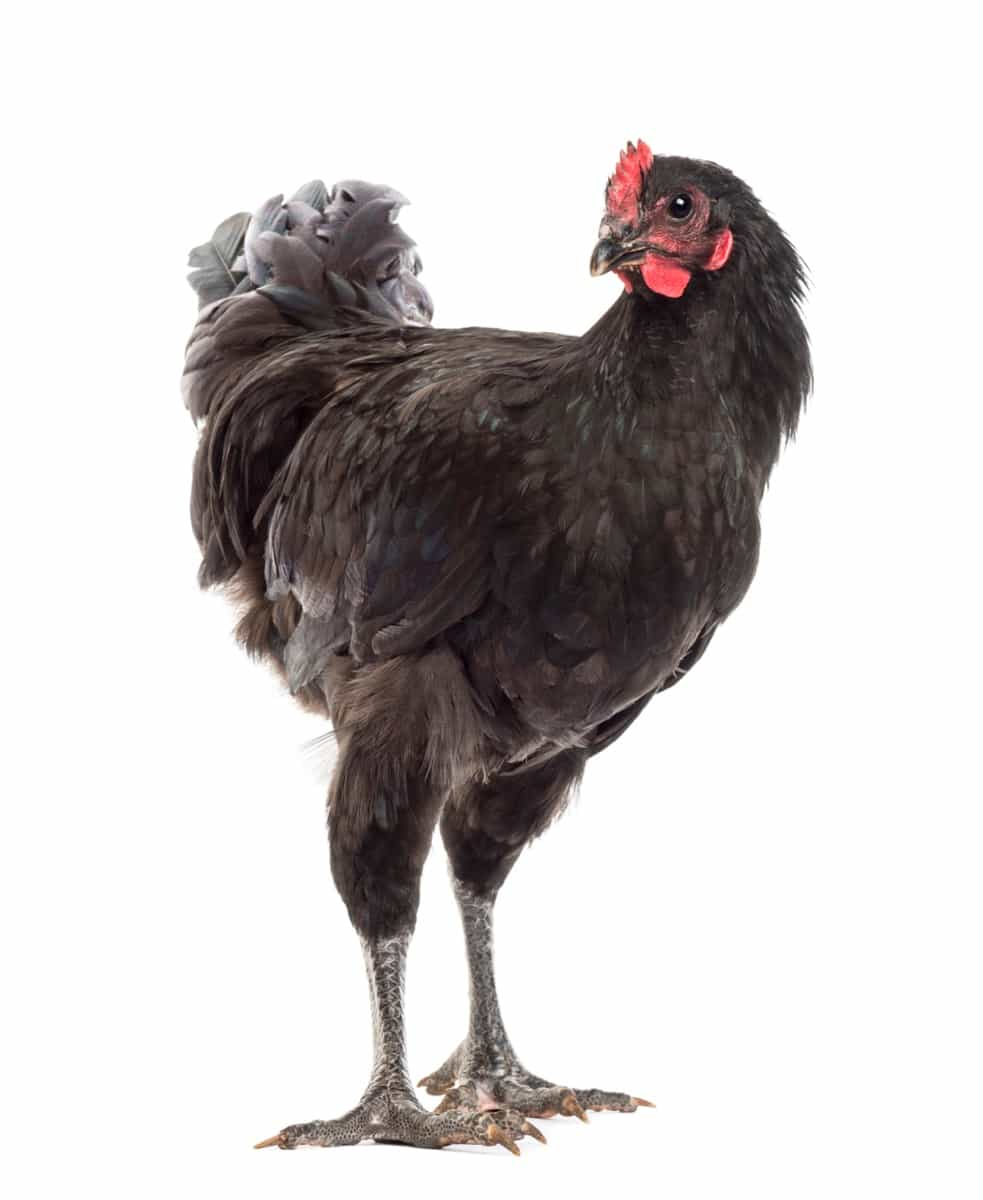
Australorp Chicken Lifespan
With proper care and management, Australorp chickens can live for 6 -8 years on average, although some individuals may live longer.
Physical Traits
- Australorps have glossy black feathers that shine in the sunlight.
- They have a sturdy build, broad chests and well-rounded bodies.
- Hens typically weigh between 6.5 to 8.5 pounds, while roosters range from 8.5 to 10 pounds.
- Feather colors may also include blue and white varieties.
- They have single combs, red wattles, and earlobes matching their plumage color.
- Size and Weight: Australorps are considered a large breed, with hens typically weighing between 6.5 to 8.5 pounds and roosters ranging from 8.5 to 10 pounds.
- Feather Colors and Patterns: The most common color variety of Australorps is black, characterized by lustrous, shiny feathers. However, blue and white varieties also exist, with variations in feather coloration.
- Comb, Wattles, and Earlobes: Australorps typically have single combs, red wattles, and earlobes that match the color of their plumage.
Behavior and Temperament
- Australorps are known for their friendly and docile nature.
- They get along well with other chickens and are not prone to aggression.
- Easily handled and enjoy human interaction.
- Produce soft clucking sounds and have a relatively low noise level.
- Make excellent additions to backyard flocks due to their calm demeanor.
- Social Behavior: Australorps are known for their friendly and docile nature, making them excellent additions to backyard flocks. They tend to get along well with other chickens and are not prone to aggressive behavior.
- Handling and Friendliness: Due to their calm demeanor, Australorps are easily handled and often enjoy human interaction. They can be quite affectionate towards their caretakers.
- Noise Level: Compared to some other breeds, Australorps are relatively quiet birds, with hens producing soft clucking sounds and occasional vocalizations.
Housing Australorp Chickens
- Require a well-ventilated coop to protect them from the elements.
- Each bird needs approximately 4 square feet of indoor space.
- Secure fencing is essential to prevent escapes and protect against predators.
- Implement predator-proofing measures around the coop and run.
- Provide nesting boxes and roosting space for comfort and safety.
Coop Requirements: Australorps require a well-ventilated coop that protects them from predators and the elements. The coop should be spacious enough to accommodate the flock comfortably.
In case you missed it:
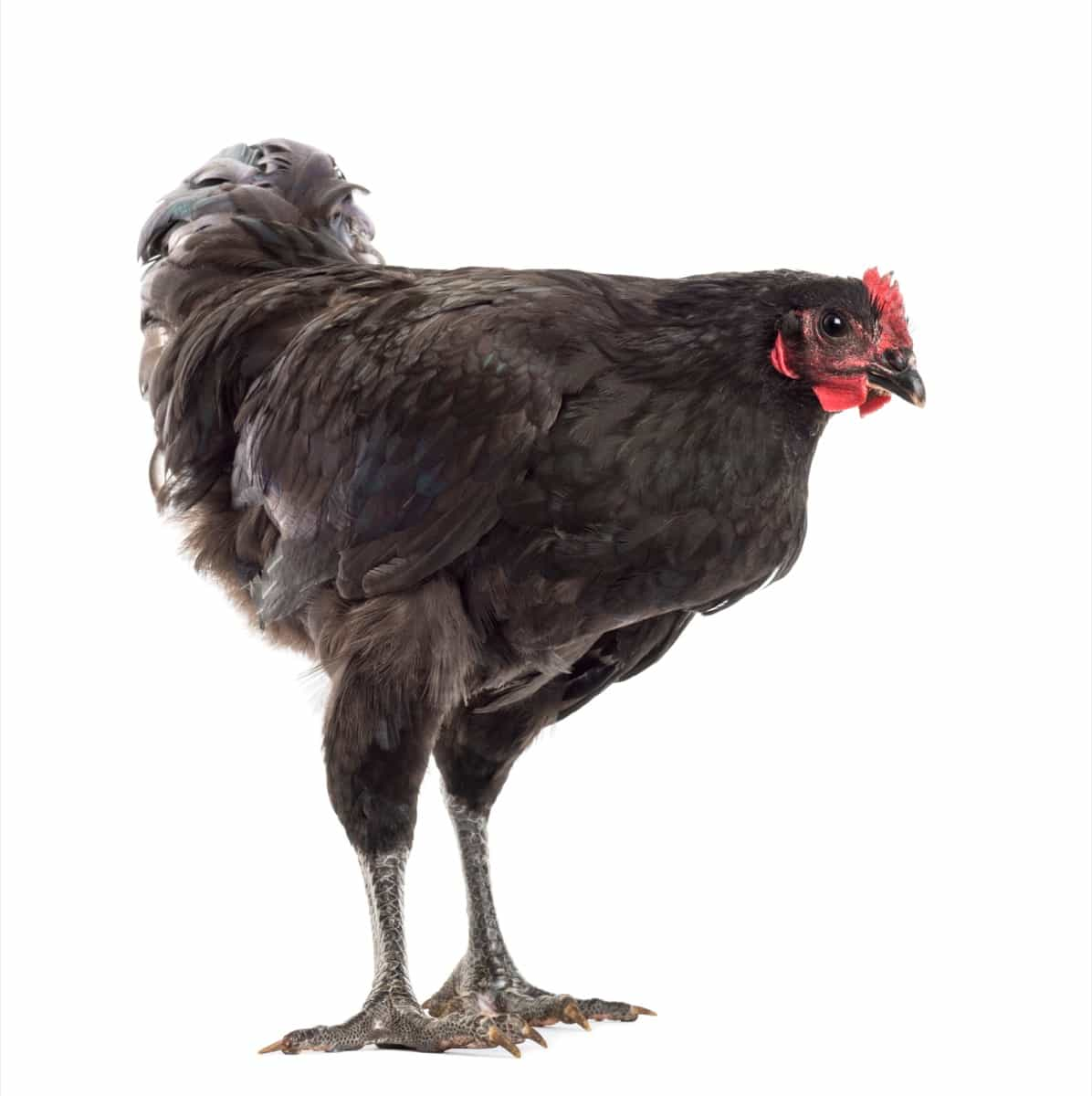
Space Needs and Fencing: Each Australorp chicken requires approximately 4 square feet of indoor space and access to outdoor run space for exercise. Fencing should be secure to prevent escapes and protect against predators.
Protection from Predators: To safeguard Australorps from predators such as foxes, raccoons, and birds of prey, it’s essential to use sturdy fencing and implement predator-proofing measures around the coop and run.
Feeding and Nutrition
- A balanced diet is crucial for Australorp chickens’ health and productivity.
- Feed them high-quality commercial poultry feed supplemented with fresh fruits and vegetables.
- Offer calcium and grit supplements to support bone health and digestion.
- Treats such as mealworms and kitchen scraps can be given in moderation.
- Diet Essentials: A balanced diet for the health and productivity of Australorp chickens. Their diet should consist of high-quality commercial poultry feed supplemented with fresh fruits, vegetables, and occasional treats.
- Supplements and Treats: Supplements such as calcium and grit should be provided to support bone health and digestion. Additionally, treats like mealworms and kitchen scraps can be offered in moderation as occasional snacks.
- Water Requirements: Access to clean, water is essential for Australorp chickens at all times. Waterers should be checked regularly and refilled as needed to prevent dehydration.
Health, Wellness, and Care
- Generally hardy birds but may be susceptible to common poultry ailments.
- Regular health checks and vaccinations are recommended.
- Implement parasite prevention measures to keep Australorps healthy.
- Provide appropriate shelter and nutrition to support overall wellness.
- Practice humane euthanasia when necessary and prioritize animal welfare.
- Common Health Issues: Australorps are generally hardy birds but may be susceptible to common poultry ailments such as respiratory infections, parasites, and reproductive disorders.
- Preventative Care and Vaccinations: Routine health checks and vaccinations against diseases like Marek’s disease and Newcastle disease are recommended to maintain flock health and prevent outbreaks.
- Dealing with Parasites: Regular parasite prevention measures, including deworming and mite control, should be implemented to keep Australorp chickens healthy and comfortable.
Australorp Egg Production
- Australorps are prolific layers, producing around 250 to 300 large brown eggs per year.
- Their eggs are prized for their excellent taste and nutritional value.
- Maximize egg production by providing optimal living conditions and minimizing stress.
- Maintain a balanced diet and ensure access to nesting boxes for comfortable egg-laying.
- Egg size and color may vary slightly but typically have a rich brown shell color.
Egg Laying Capabilities: Australorps are prolific layers, capable of producing around 250 to 300 large brown eggs per year under optimal conditions. Australorps are famous for laying more than 300 eggs per year.
Egg Size, Color, and Quality: Australorp eggs are typically large and have a rich brown shell color. They are prized for their excellent taste and nutritional value.
In case you missed it:
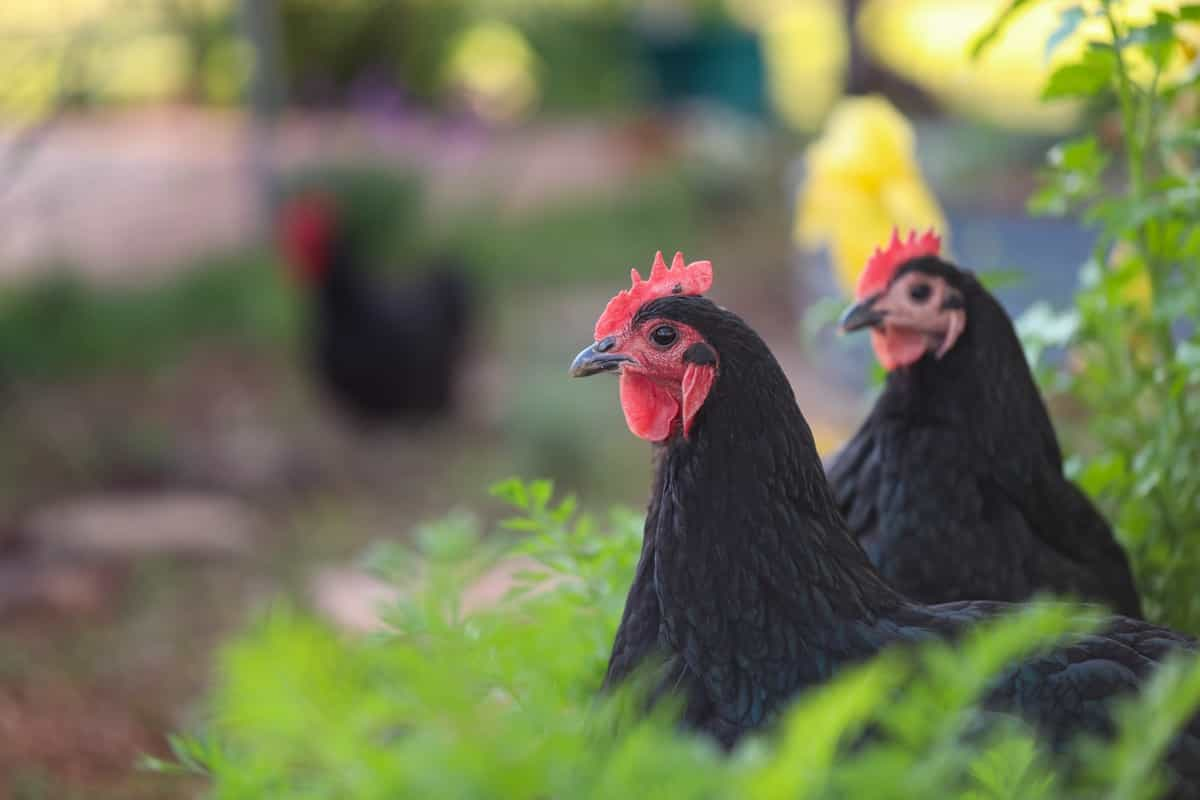
Improving Egg Production: To maximize egg production, ensure that Australorps receive a balanced diet, adequate lighting, and optimal living conditions. Minimize stressors and provide nesting boxes for comfortable egg-laying.
Breeding Australorp Chickens
- Select breeding stock with desirable traits like good egg-laying ability and friendly temperament.
- Incubate eggs using natural or artificial methods, maintaining optimal temperature and humidity.
- Provide chicks with a warm and secure brooding environment for healthy growth.
- Monitor flock genetics and avoid inbreeding to maintain genetic diversity.
- Rearing chicks require attention to nutrition, temperature, and socialization.
Selecting Breeding Stock: When breeding Australorps, choose individuals with desirable traits such as good egg-laying ability, strong conformation, and friendly temperament.
Incubation and Hatching: Australorp eggs can be successfully incubated using either natural or artificial methods. Maintain optimal temperature, humidity levels throughout the incubation period for best results.
Rearing Chicks: Provide chicks with a warm and secure brooding environment, along with a balanced diet, to support healthy growth and development.
Australorp Chickens for Shows
- Prepare Australorps for exhibitions by grooming and handling them regularly.
- Showcase their plumage and overall condition through meticulous bathing and grooming.
- Familiarize birds with the show environment to minimize stress during competitions.
- Follow breed standards and judging criteria set by poultry associations.
- Attend workshops and seek advice from experienced exhibitors for success in poultry shows.
Preparing for Exhibitions: To prepare Australorps for the show, bathe and groom them meticulously to showcase their plumage and overall condition. Practice handling to ensure they are comfortable with the show environment.
Show Standards and Judging Criteria: Australorps are judged based on breed standards set by poultry associations, with criteria including conformation, feather quality, and overall presentation.
Tips for Success in Poultry Shows: Attend workshops and seek advice from experienced exhibitors to learn best practices for showing Australorp chickens. Pay attention to grooming and presentation details to make a favorable impression on judges.
Managing Australorp Chickens in Different Climates
- Provide adequate shelter and insulation to protect Australorps from cold temperatures.
- During hot weather, provide shade, ventilation, and cool water to prevent heat stress.
- Adjust management practices seasonally to account for changes in temperature and environmental conditions.
- Monitor flock health closely and make adjustments as needed to ensure their well-being.
- Implement appropriate measures to prevent weather-related health issues and discomfort.
Adapting to Cold Weather: Provide adequate shelter and insulation to protect Australorps from cold temperatures. Ensure access to fresh water that doesn’t freeze and adjust feeding to account for increased energy needs.
Heat Stress Management: During hot weather, provide shade, ample ventilation, and cool water to prevent heat stress in Australorp chickens. Avoid handling birds during the hottest parts of the day.
In case you missed it:
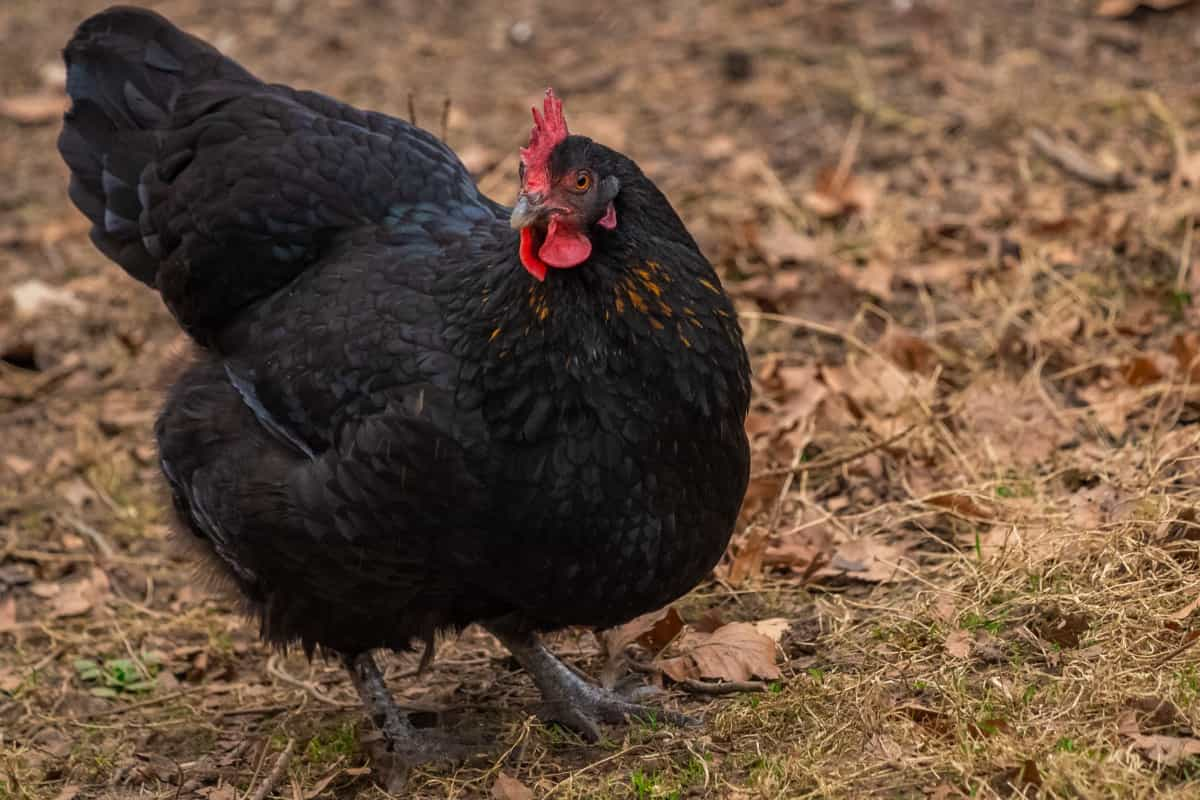
Seasonal Care Variations: Adjust management practices seasonally to account for changes in temperature, daylight hours, and environmental conditions. Monitor flock health closely and make adjustments as needed.
Integrating Australorps with Other Breeds
- Introduce Australorps to existing flocks gradually to minimize aggression.
- Provide sufficient space and resources to reduce competition and establish a pecking order.
- With proper supervision, Australorps can coexist harmoniously with other chicken breeds.
- Mixed flock management enhances diversity and dynamics within the flock.
- Consider compatibility and hierarchy establishment when integrating Australorps with other breeds.
Compatibility and Pecking Order: When introducing Australorps to existing flocks, monitor for signs of aggression and establish a pecking order gradually. Provide sufficient space and resources to minimize competition.
Mixed Flock Management: With proper supervision and management, Australorps can coexist harmoniously with other chicken breeds, contributing to a diverse and dynamic flock.
Benefits and Challenges: Integrating Australorps with other breeds can enhance flock dynamics and productivity but may also present challenges related to compatibility and hierarchy establishment.
Sustainable Practices with Australorp Chickens
- Utilize Australorps for pest control by allowing them to forage for insects and pests.
- Compost chicken manure to create organic fertilizer for gardens and crops.
- Backyard chicken farming with Australorps promotes self-sufficiency and sustainable food production.
- Implement environmentally friendly practices to minimize waste and resource consumption.
- Advocate for responsible chicken keeping practices and support legislation that protects animal welfare.
Utilizing Chickens for Pest Control: Australorps can contribute to pest control efforts by foraging for insects and pests in the garden or around the property, reducing the need for chemical interventions.
Composting Chicken Manure: Chicken manure is source of organic fertilizer rich in nitrogen and other nutrients. Composting chicken manure can help reduce waste and improve soil health.
Australorp Chicken Farming in the Backyard: Backyard chicken farming with Australorps allows individuals to produce fresh eggs and meat sustainably while connecting with nature and practicing self-sufficiency.
The Economic Aspect of Raising Australorps
- Evaluate the economic feasibility of raising Australorps by considering initial investment and ongoing maintenance costs.
- Income sources may include selling eggs, chicks, mature birds, and participating in poultry shows.
- Hobbyists may prioritize enjoyment and self-sufficiency, while commercial farmers focus on profitability.
- Conduct a cost-benefit analysis to find the financial viability of raising Australorps.
- Consider both short-term, long-term financial implications when raising Australorps for profit.
Cost Analysis of Raising Chickens: Consider factors such as initial investment, ongoing maintenance costs, and potential returns when evaluating the economic feasibility of raising Australorps.
Potential Income Sources: Income sources from raising Australorps may include selling eggs, chicks, or mature birds, as well as participating in poultry shows and competitions.
Financial Considerations for Hobbyists vs. Commercial Farmers: Hobbyists may prioritize enjoyment and self-sufficiency over financial gains, while commercial farmers focus on maximizing profitability through efficient production and marketing strategies.
Ethical Considerations and Animal Welfare
- Provide Australorps with adequate space, shelter, food, and water to ensure their well-being.
- Prioritize humane treatment and implement euthanasia practices when necessary.
- Offer opportunities for natural behaviors and enrichment to promote physical and psychological health.
- Stay informed about local regulations and advocate for policies that protect animal welfare.
- Consider the ethical implications of raising and caring for Australorps and strive to uphold high standards of animal welfare.
Ensuring Humane Treatment: Provide Australorps with adequate space, shelter, food, and water, and prioritize their physical and mental well-being. Implement humane euthanasia practices when necessary.
Space and Enrichment Needs: Offer opportunities for natural behaviors such as foraging, dust bathing, and roosting to promote the physical and psychological health of Australorp chickens.
Advocacy and Legal Issues: Advocate for responsible chicken-keeping practices and support legislation that protects the welfare of poultry. Stay informed about local regulations regarding chicken ownership and care.
In case you missed it:
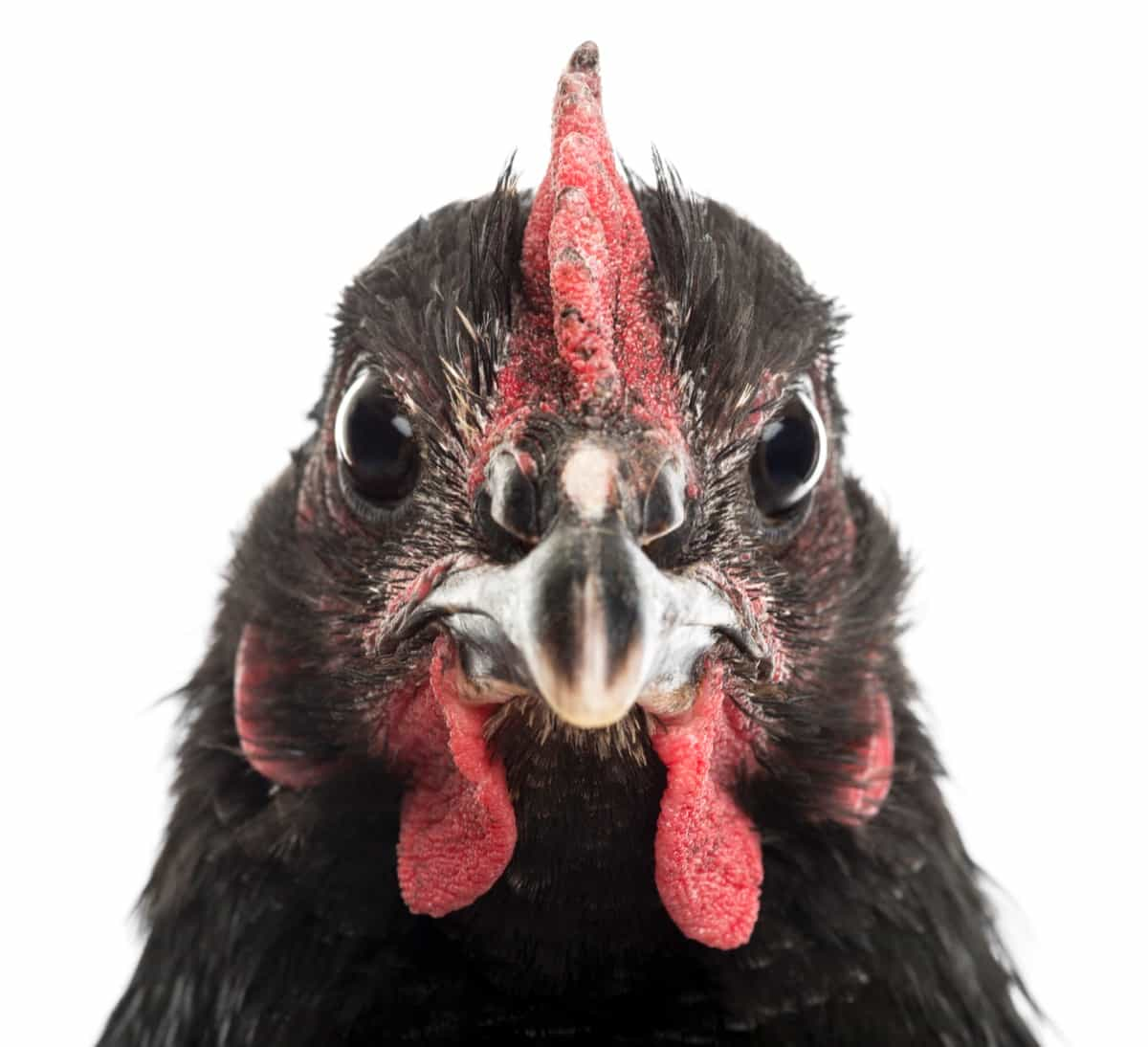
Conclusion
The Australorp is an Australian chicken breed known for its egg-laying abilities, originating from the Australian black Orpington. Originating in the 1920s, it gained worldwide popularity and is now the honorary national bird of Australia. Known for its versatility, the Australorp is an ideal choice for both novice and experienced poultry enthusiasts, embodying excellence in poultry husbandry through its rich history and sustainable practices.
- Types of Pesticides Used in Agriculture: A Beginner’s Guide
- Economical Aquaculture: A Guide to Low-Budget Fish Farming
- 15 Common Planting Errors That Can Doom Your Fruit Trees
- How to Make Houseplants Bushy: Effective Tips and Ideas
- Innovative Strategies for Boosting Coconut Pollination and Yield
- Pollination Strategies for Maximum Pumpkin Yield
- The Complete Guide to Chicken Fattening: Strategies for Maximum Growth
- Natural Solutions for Tulip Problems: 100% Effective Remedies for Leaf and Bulb-Related Issues
- Revolutionizing Citrus Preservation: Towards a Healthier, Greener Future
- Natural Solutions for Peony Leaf and Flower Problems: 100% Effective Remedies
- Maximizing Profits with Avocado Contract Farming in India: A Comprehensive Guide
- Natural Solutions for Hydrangea Problems: 100% Effective Remedies for Leaf and Flowers
- The Ultimate Guide to Choosing the Perfect Foliage Friend: Bringing Life Indoors
- From Sunlight to Sustainability: 15 Ways to Use Solar Technology in Agriculture
- The Ultimate Guide to Dong Tao Chicken: Exploring from History to Raising
- The Eco-Friendly Makeover: How to Convert Your Unused Swimming Pool into a Fish Pond
- Mastering the Art of Delaware Chicken Farming: Essentials for Healthy Backyard Flocks
- 20 Best Homemade Fertilizers for Money Plant: DIY Recipes and Application Methods
- How to Craft a Comprehensive Free-Range Chicken Farming Business Plan
- Brighten Your Flock: Raising Easter Egger Chickens for Beauty and Bounty
- How to Optimize Your Poultry Egg Farm Business Plan with These Strategies
- Subsidy for Spirulina Cultivation: How Indian Government Schemes Encouraging Spirulina Farmers
- Ultimate Guide to Raising Dominique Chickens: Breeding, Feeding, Egg-Production, and Care
- Mastering the Art of Raising Jersey Giant Chickens: Care, Feeding, and More
- Ultimate Guide to Raising Legbar Chickens: Breeding, Farming Practices, Diet, Egg-Production
- How to Raise Welsummer Chickens: A Comprehensive Guide for Beginners
- How to Protect Indoor Plants in Winter: A Comprehensive Guide
- Ultimate Guide to Grow Bag Gardening: Tips, Tricks, and Planting Ideas for Urban Gardeners
- Guide to Lotus Cultivation: How to Propagate, Plant, Grow, Care, Cost, and Profit
- Agriculture Drone Subsidy Scheme: Government Kisan Subsidy, License, and How to Apply Online
- Ultimate Guide to Raising Araucana Chickens: Breed Profile, Farming Economics, Diet, and Care
- Bringing Hydroponics to Classroom: Importance, Benefits of Learning for School Students
- Ultimate Guide to Raising Polish Chickens: Breed Profile, Farming Economics, Diet, and Care
- Ultimate Guide to Raising Australorp Chickens: Profile, Farming Economics, Egg Production, Diet, and Care
- Silkie Chicken Farming: Raising Practices, Varieties, Egg Production, Diet, and Care
- Sussex Chicken Farming: Raising Practices, Varieties, Egg Production, Diet and Care